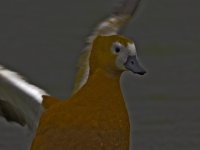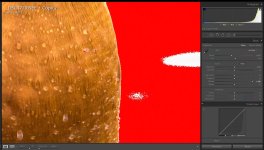I'm trying to get rid of "white" fringes in some of my shots.
They're not normal chromatic aberration and can't be corrected as such. They do appear only in high contrast areas and create a very tiny halo effect. I first assumed it was normal CA and tried about everything to get rid of them but it doesn't appear to be a color problem but a lack of color problem. It's not a processing issue either since it's there in the RAW.
In this shot you see the white fringe or halo where dark meets the sky.

If it was a color disturbance, it should change when lowering the luminance of specific colors but even when I lower all, this is what remains.

That same white fringe.
It's not one lens that triggers it; it's about all and I'm not the only one suffering it since I see it in plenty a shot. When enlarging the shot, the effect is less visible but it's there even when looking pixel-sized.
Does anyone know how to get rid of it or how to avoid it? Maybe a filter blocking certain light?
Edit: I've been checking some shots at sites of those using the "better" equipment and lo and behold, the same can be seen there.
This page as an example: https://photographylife.com/how-to-photograph-birds
They're not normal chromatic aberration and can't be corrected as such. They do appear only in high contrast areas and create a very tiny halo effect. I first assumed it was normal CA and tried about everything to get rid of them but it doesn't appear to be a color problem but a lack of color problem. It's not a processing issue either since it's there in the RAW.
In this shot you see the white fringe or halo where dark meets the sky.

If it was a color disturbance, it should change when lowering the luminance of specific colors but even when I lower all, this is what remains.

That same white fringe.
It's not one lens that triggers it; it's about all and I'm not the only one suffering it since I see it in plenty a shot. When enlarging the shot, the effect is less visible but it's there even when looking pixel-sized.
Does anyone know how to get rid of it or how to avoid it? Maybe a filter blocking certain light?
Edit: I've been checking some shots at sites of those using the "better" equipment and lo and behold, the same can be seen there.
This page as an example: https://photographylife.com/how-to-photograph-birds
Last edited:





